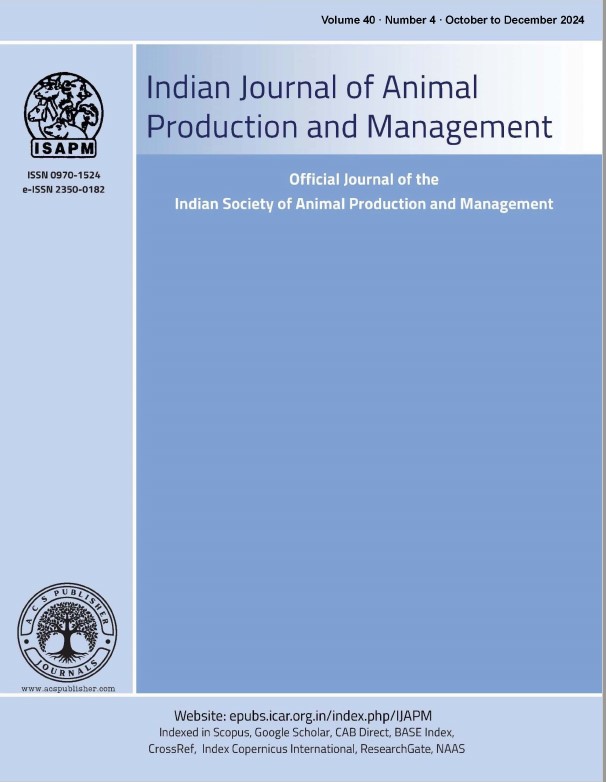Management interventions in indigenous bull to reduce age at first semen donation
DOI:
https://doi.org/10.48165/ijapm.2020.36.1and4.20Keywords:
Age at first semen donation, Exercise, Management input, Sahiwal bull, Sexual behaviourAbstract
To achieve lifetime more semen productivity, one of the critical aim of breeding centers is to make sexual maturity at early age in bulls. Therefore, a study was planned one group as control (n=5: applied only bull nose ring, handling by Nath (halter), two hour exercise once in a week, different bull handler and semen collection at 08.30 AM) and another group as treatment (n=5: applied halter along with bull nose ring, handling by the halter, managed by same worker, two-hour exercise daily, semen collection at 06.30 AM) to reduce the age at first semen donation through management inputs. Sexual behavior and semen quality data of the two groups were analyzed by T-test. All the bulls (100%) in the treatment group started donating semen by on an average 21.3 months, whereas only 60% bulls in control group donated semen on an average 34.6 months. The results revealed that in the treatment group, the sexual behaviour improved significantly (p<0.01). The semen quality of the bulls of the control group was significantly (p<0.05) better as the compared treatment group. It can be concluded that managemental intervention helps in the reduction of the average age of first semen donation and better expression of sexual behavior.

